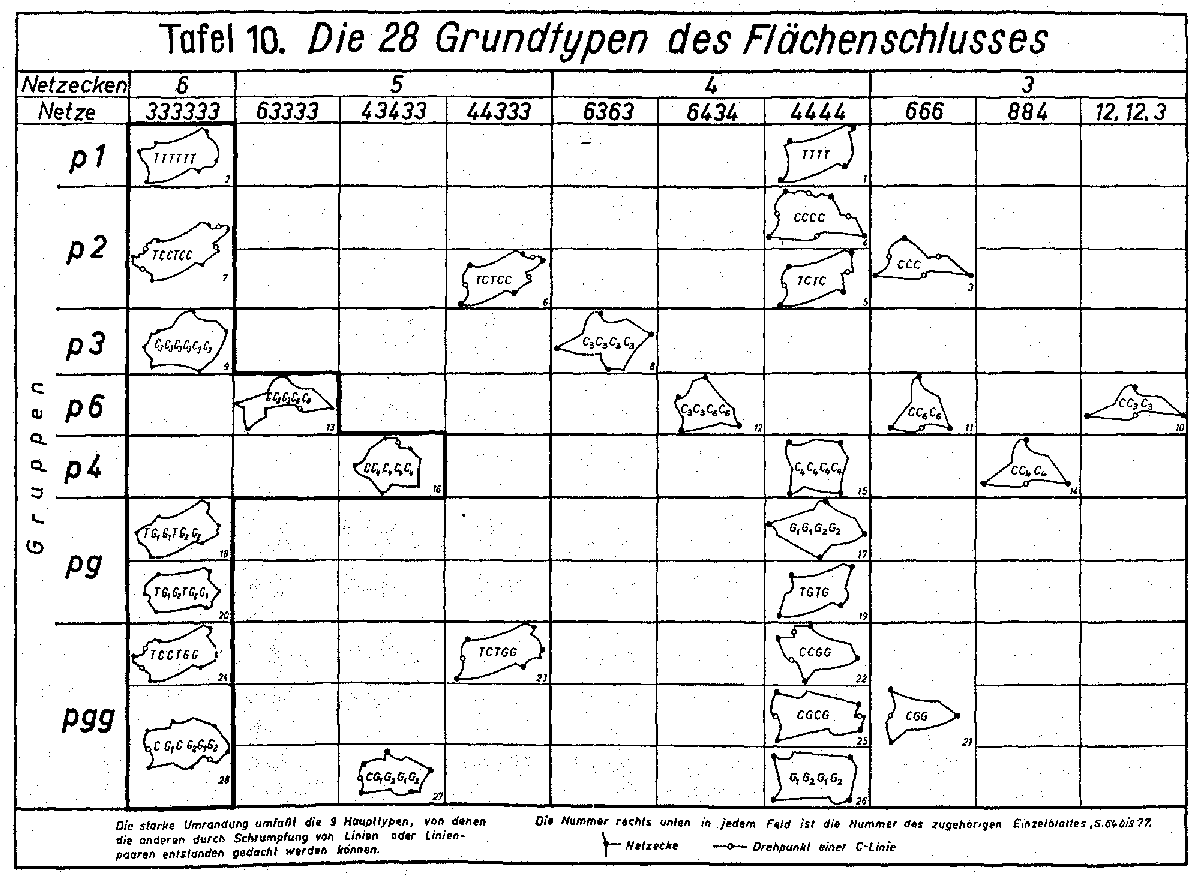| ICU Wallpaper |
Heesch Tile
Heinrich Heesch (1906-1995) |
| Properties of the aggregate |
Dissection of tile boundary into lines and vertices |
| Each pattern has 1 to 4 properties |
Each pair of line has one and only one property |
| All patterns have translation symmetry. |
Only TT lines have translation symmetry. |
|
A pattern may have no boundary and no limit on size. |
A tile is composed of minimum 2 sets of lines. And a maximum of 4 sets of lines. A set is normally two separate lines from a symmetry movement. C line with half turn symmetry at center is a pair by itself. Half the boundary of the tile is a copy of the other half. |
|
Patterns and images can fill the inside of a silhouette. |
Inside of the tile is not part of the tile definition. |
|
All p4 and p6 patterns have p2 property. Only smallest angle rotation is counted. |
All line properties are counted. C lines (half turn) are counted with C3, C4 & C6. |
|
Mirror and glide mirror lines have angle properties (parallel, intersect, 45 degree) and coincide (or not) with rotation centers |
Lines on tile boundary cannot be mirrored. Glide mirror axes may be parallel or perpendicular. |
When the pattern or tile has no mirror and no glide mirror property,
these are the different classifications:
| ICU 17 Wallpaper Groups (Symmetry of Pattern) |
Heesch 28 Basic Tiles (Symmetry of Line Components) |
Escher example |
| p1 | TTTT TTTTTT |
Pegasus
TTTT Sky and Water |
| p2 | CCC CCCC TCCTCC TCTCC TCTC |
Lizard TCTC Sea horse CCCC |
| p3 | C3C3C3C3 C3C3C3C3C3C3 |
Escher Reptiles |
| p4 | CC4C4 C4C4C4C4 CC4C4C4C4 |
Lizard C4C4C4C4 |
| p6 | CC6C6 CC3C3 C3C3C6C6 CC3C3C6C6 |
Dolphins CC3C3C6C6 |

Heesch s table of the 28 types of asymmetric isohedral tiles
Kevin Lee discussion of 28 different intocking shapes
Heesch's Table on Kevin Lee website
Heesch's diagrams of the 28 types of interlocking shapes
Computer generated Escher tiles by William Chow 1979
Use of tessellations in art and product design 1980
Penrose tile in Architecture
Beautiful designs with mathematics ideas
Escher's lizards everywhere
Animated tiles by David Chow
My nephew Aaron Chow is 3D printer product designer
Screen shots of a CD to teach Tessellations